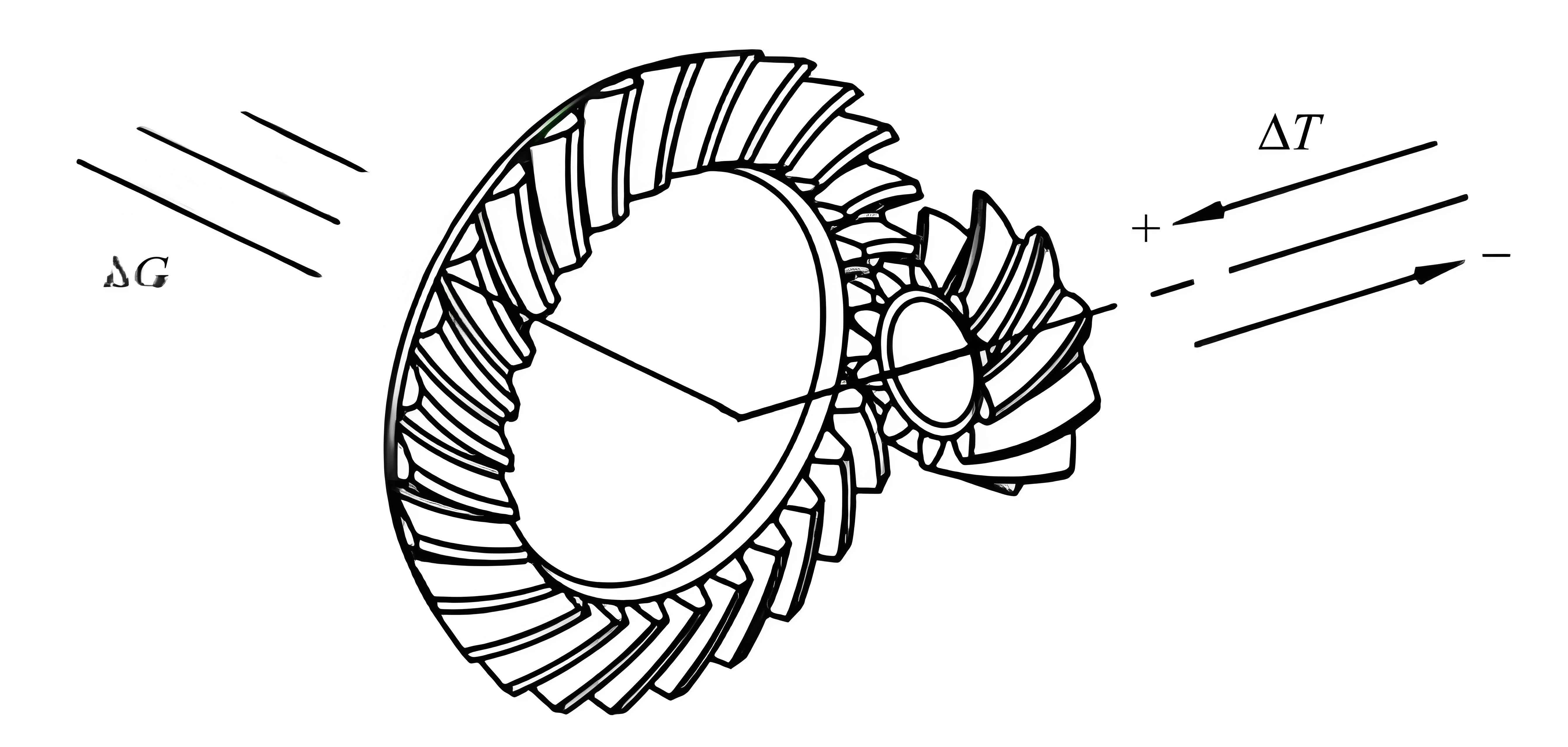Abstract
Due to the coupled vertical vibration of the automotive rear axle spiral bevel gear, accurate detection of gear wear is challenging. Therefore, a wear detection method for automotive spiral bevel gears based on Delaunay triangulation is proposed. This method utilizes scanning techniques to measure discrete data on the gear surface, employs Delaunay triangulation to process adjacent scan lines, and adopts the Hermite interpolation algorithm for wear detection. Experimental results demonstrate that the proposed method achieves high detection accuracy.

1. Introduction
As automobiles have become indispensable in daily life, gear wear, especially in spiral bevel gears of the rear axle, poses a significant threat to driving safety. Existing gear wear detection methods have limitations in detection accuracy due to issues such as noise interference and insufficient fitting results. To address these issues, a new detection method based on Delaunay triangulation is introduced.
2. Literature Review
Previous research has explored various gear wear detection methods, including those based on wavelet packet energy and modulation signal bispectrum sideband estimation [3], reverse engineering [4], and improved Mask Scoring R-CNN [5]. However, these methods suffer from problems such as noise interference, inadequate fitting results, and large sample noise, affecting detection accuracy.
3. Methodology
3.1 Delaunay Triangulation for Gear Surface Data Blocking
To precisely describe the surface area of automotive spiral bevel gears and improve detection accuracy, Delaunay triangulation is applied to block non-characteristic discrete data on the gear surface. Delaunay triangles ensure that no other points exist within the circumcircle of any triangle, and triangles are formed with the nearest points, yielding consistent results regardless of the starting point.
Table 1. Material Properties of Automotive Spiral Bevel Gears
| Component | Material | Density (kg/m³) | Young’s Modulus (GPa) | Poisson’s Ratio |
|---|---|---|---|---|
| Gear | 45Cr | 7850 | 206 | 0.3 |
3.2 Wear Detection Using Hermite Interpolation Algorithm
Based on the non-characteristic discrete data blocking results, the Hermite interpolation algorithm, specifically the Local Mean Decomposition (LMD) method, is employed for wear detection. The detection steps include:
- Transforming the original noisy discrete data into small parameter data.
- Applying denoising techniques to obtain denoised discrete data.
- Extending the extreme points of the denoised data to obtain a new sequence.
- Generating two envelope lines using the Hermite interpolation algorithm.
- Calculating the local mean function and envelope estimation function.
- Determining the PF component amplitude to identify wear areas.
4. Experimental Validation
4.1 Experimental Setup
The spiral bevel gears of a Santana 2015 manual car were selected for the study. The experimental setup included sensors and equipment to measure gear wear data over 200 hours, with data collected every 5 minutes.
4.2 Comparison of Wear Detection Methods
Three methods were compared: the proposed method, and the methods from literature [4] and [5].
4.3 Results and Analysis
Table 2. Wear Depth Results
| Gear Number | Proposed Method (mm) | Literature [4] Method (mm) | Literature [5] Method (mm) | Actual Measurement (mm) |
|---|---|---|---|---|
| 5 | – | – | – | – |
| 10 | – | – | – | – |
| 15 | – | – | – | – |
| 20 | – | – | – | – |
Table 3. Wear Area Detection Accuracy
| Experiment Number | Proposed Method (%) | Literature [4] Method (%) | Literature [5] Method (%) |
|---|---|---|---|
| 1 | 96.9 | 77.9 | 83.9 |
| 2 | 98.3 | 76.3 | 79.1 |
| … | … | … | … |
| 10 | 98.7 | 71.9 | 79.4 |
The proposed method achieved the highest detection accuracy, with a maximum of 98.7%, significantly outperforming the other methods.
5. Conclusion
The proposed Delaunay triangulation method for wear detection of automotive spiral bevel gears effectively addresses the challenges posed by coupled vertical vibration. By employing Delaunay triangulation for data blocking and the Hermite interpolation algorithm for wear detection, the method achieves high detection accuracy. Experimental results confirm the method’s effectiveness, contributing fresh insights to gear wear detection technology.
